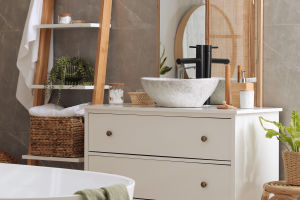Choosing between raising in free-range or raising in a cage for cats is a topic surrounded by controversy. Let's delve into it further with a closer analysis, using simple and clear sentences.
Raise in a cage, in its truest form, involves confining a cat within a cage for extended periods.
During this time, the cat cannot move freely and can only go out briefly when the cage door is opened for essential activities like eating, drinking, eliminating waste, and sleeping. However, it's important to note that this kind of prolonged caging is not favorable for cats.
Long-time confinement can lead to several negative outcomes for cats, including:
1. Moodiness and Aloofness: Cats kept in cages for too long can become irritable and distant.
2. Physical and Mental Health Issues: They may experience sensitivity, lethargy, depression, and loss of appetite.
3. Social Isolation: Prolonged caging can hinder interaction and integration with other animals.
4. Stereotypical Behaviors: Cats may develop nervousness, anxiety, and excessive fur licking as a result of the stress caused by confinement.
However, temporary caging can have its merits and can be beneficial for your cat in specific situations:
1. Introducing a New Cat:
When you introduce a new cat to your home, using a cage can help the newcomer feel secure. It allows the cat to acclimate to the environment safely. Placing a cozy cardboard box or covering the cage with a cloth can create a comforting, dark space. It also aids in gradually introducing cats to each other, preventing conflicts.
2. Post-Surgery or Recovery Period:
After surgeries or during recovery from injuries like fractures, a cage can limit the cat's movements to prevent further harm. If other cats are present in the house, it helps avoid rough play that could re-injure the healing cat.
Nevertheless, if the recovering cat shows the desire to move around, short daily outings should be allowed, with precautions taken to avoid interaction with other healthy cats.
3. Resolving Cat Conflicts:
In households with multiple cats, conflicts may arise. A cage can be used to isolate fighting cats and prevent accidents.
It's crucial to emphasize that a cage is never an absolute necessity, regardless of your home's setup or the number of cats you have. Whether caging is beneficial or harmful depends on your intentions and the specific circumstances.
In general, it is advisable to let cats roam freely unless there are special circumstances. Always prioritize your cat's well-being, using temporary caging only when it serves a clear purpose and taking steps to ensure their comfort and safety.


